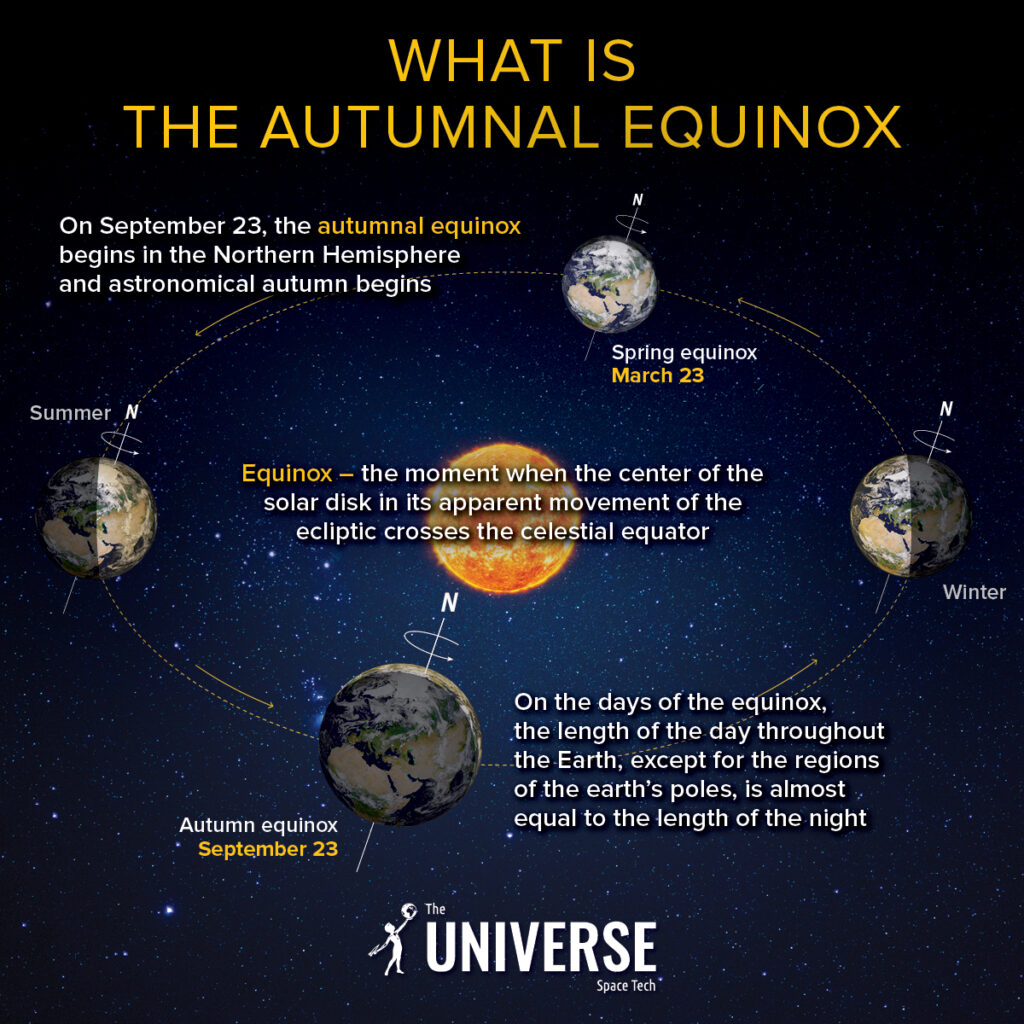The autumnal equinox, which is considered the beginning of astronomical autumn, this year will come on September 23 at 04:04 a.m. GMT+3. As we have already written, the name “equinox” does not quite correctly reflect what is happening, namely, the intersection of the celestial equator by the center of the solar disk and its transition from the Northern Hemisphere of the celestial sphere to the southern one.
Due to a number of purely physical reasons — such as atmospheric refraction and deviation of the true horizon from the mathematical one — neither on September 23, nor a couple of days after that date, the light part of the day when the Sun is above the horizon will be a few minutes longer than the dark one. Similarly, in spring, day and night will formally equal a few days before the “official” vernal equinox. Our ancient ancestors, who observed the movement of celestial bodies with the help of megalithic observatories, had no clocks and were guided by the points of sunrise and sunset of our luminary. But even in this way they were able to determine the dates of the solstices and equinoxes with good accuracy, quite sufficient for the domestic and religious needs of that era.

Among astronomy enthusiasts there are those who, out of curiosity, reproduce the practices of observers of the past. In the case of a clear sky, we advise them on this day to somehow fix the point of the horizon beyond which the upper edge of the solar disk will disappear, and determine when it will do so at the same point next year.
The moment of the equinox does not always fall on September 23, moreover, in the future it happens less and less. This is due to the fact that the exact duration of the Earth’s orbit of the Sun is 365.2422 days. The “non-whole” remainder is compensated by adding one day to the month of February every 4 years, but a small difference remains and gradually accumulates, so on average the moments of the equinoxes and solstices gradually shift to earlier dates. They will “return to their place” only in 2100, when, according to the rules of the Gregorian calendar, February will have 28 days. In the Julian calendar, this year will be a leap year.
Follow us on Twitter to get the most interesting space news in time
https://twitter.com/ust_magazine

